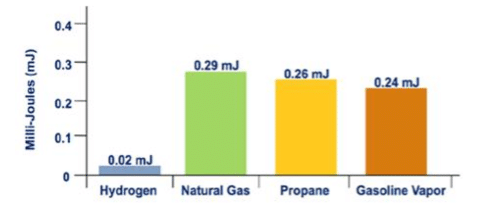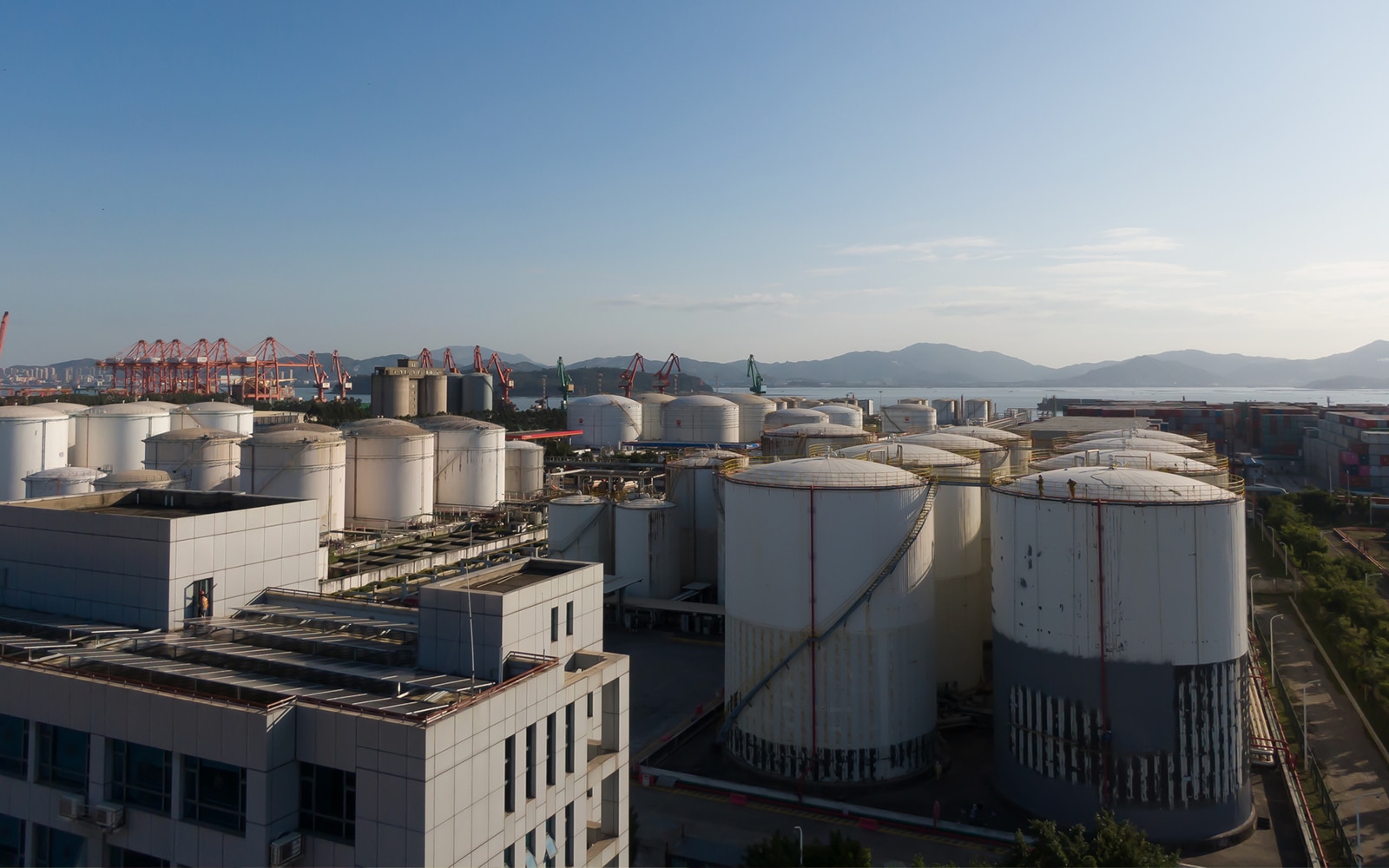- Hydrogen gas produced using alternative techniques is an exciting fuel option for vehicles, aviation, and shipping to cut carbon emissions.
- Hydrogen is stored and transported as a liquid but used chiefly as a gas. The two states have varying properties, which must be considered during their handling.
- Hydrogen’s colorless, odorless, and highly flammable nature must be considered while storing, transporting, and handling it.
All fuels have some risks involved in their use. Hydrogen producing zero carbon emissions is considered a fuel for the future. Novel engineering solutions are being designed, considering the element’s properties. Gas detection has emerged as one of the essential measures in the entire supply chain. Find out how hydrogen’s property shapes its handling and the necessary protocols in the gas and oil industry for hydrogen leak detection
Hydrogen Fuel Applications
Hydrogen is a chemical energy carrier like oil and gas, storing three times the energy per unit mass as petrol. Hydrogen combines with oxygen during burning to release energy and produces water as the end product. It can be piped or transported like natural gas and oil and stored for many months.
It is a zero-emission fuel that can decarbonize long-haul transport, aviation, electric power generation, iron, steel, and chemical sectors. Therefore, hydrogen produced by green alternate methods is important in Net Zero Emissions Scenarios. Hydrogen could help us reach 100% renewable electricity production since it can be stored for long periods.
96 percent of hydrogen is produced from fossil fuels and used for fertilizers, chemicals, and oil refineries.
Hydrogen Properties That Make it Hazardous
Hydrogen is not toxic, and its use is dangerous due to its flammability.
Hydrogen can be used as a fuel in a gas or liquid state. Spacecrafts use liquid hydrogen, while cars use gaseous hydrogen. Hydrogen is also stored and transported as a liquid.
Hydrogen Gas is Odorless and Invisible
Hydrogen is prone to leakage since it is a small molecule. Hydrogen leak detection can be challenging as hydrogen is a colorless, odorless, and lightweight gas, making it impossible to rely on one’s sense of smell alone.
Propane or natural gas is also odorless, but a sulfur-containing odorant Mercaptan is added so people can smell even small leaks. However, no odorants for hydrogen have been identified, as the chemical would have to be as light as hydrogen; otherwise, when people smell it, the hydrogen concentration is already at unsafe levels.
Since hydrogen is colorless, it is invisible and can’t be seen.
In confined spaces, leaked hydrogen can accumulate. If hydrogen levels rise, it can replace oxygen. If it reduces oxygen levels from the usual 20.9% to below 18%, hydrogen becomes an asphyxiant.
Before hydrogen levels can be asphyxiant, the amount of hydrogen accumulated becomes flammable and can explode or catch fire. The gas has a wide flammability range compared to other gases, and it ignites (if there is an ignition source) when it makes up 4 to 75 percent of the air. Ventilation and sensor-based detection is the solution in these cases.
A 29% hydrogen-to-air volume ratio is the optimum combustion point when even a tiny spark can ignite it, see Figure 1. At lower concentrations, hydrogen requires energy similar to other fuels. Hydrogen will also react violently with other oxidizers like oxygen and halogens.
Hydrogen burns with a blue flame, which is not easily detected during the day. Detection sensors are therefore needed where hydrogen systems exist.

Figure 1: Minimum ignition energy needed to start hydrogen combustion compared to other fuels at optimum concentrations, Pacific Northwest National Laboratory. (Credits: https://h2tools.org/bestpractices/hydrogen-compared-other-fuels)
Another challenge in using hydrogen is that it has more energy by weight, not volume. Therefore large volumes of hydrogen gas are compressed in cylinders. Hydrogen storage tanks always have high pressure and are equipped with safety devices to reduce pressure if necessary.
In open spaces, hydrogen that ignites will flash back to the gas source. Hydrogen burns more rapidly than other fuels and can release all energy in a short time. In cases of leaks in confined spaces, hydrogen mixes with air, and any ignition will cause a fire and explosion capable of blowing apart buildings.
Despite these risks, hydrogen can be safer to use as a fuel for the following reasons:
- According to Pacific Northwest National Laboratory, hydrogen is 57 times lighter than gasoline vapors and 14 times lighter than air. Being lighter than air makes it safer to use than gasoline, as hydrogen rises and dissipates outdoors, unlike gasoline vapors that sink to the ground.
- Explosion risks of hydrogen are lower than gasoline as it has a higher oxygen demand (18-59%) to burn, while gasoline needs only 1-3% oxygen.
Liquid Hydrogen
Hydrogen is a colorless liquid with properties and hazard risks different from hydrogen gas. Therefore, liquid hydrogen needs other safety measures.
The ratio of liquid to gaseous hydrogen is 1:850, that is, one liter of liquid hydrogen equals 850 liters of gaseous hydrogen. Hydrogen changes rapidly from liquid to gas, so ventilation and pressure release devices are the safety measures to allow the element to escape as a gas.
Unlike gas, liquid hydrogen can cause lung damage or cryogenic burns as it is stored at extremely low temperatures of -423°F or -252°C. Hydrogen can remain in a liquid form only under these temperatures, and any spillage on the surface will cause it to change to its gaseous state and expand by 848 times in volume.
If the liquid warms within containers without pressure release systems, the standard pressure of 150 psi at which it is stored can increase to 25,000 psi, resulting in container rupture and gas jet streams. These situations are prone to ignition, and hydrogen can even displace oxygen sufficiently to become an asphyxiant.
Currently, pipelines are the most technologically and economically effective hydrogen transportation. Around 2600 km and 2000 km of hydrogen pipelines exist in the USA and Europe, respectively.
Measures To Prevent Hydrogen Hazards
For hydrogen to be a safe alternative, high safety standards equal to or surpassing those of fossil-fuel vehicles and aircraft are necessary. Transport safety is the primary concern for hydrogen. Transport pipelines and refueling stations must also be built to avoid leakages and combustion risks.
Hydrogen’s properties require customized solutions for safe storage, transport, and use, and some essential features are listed below:
- Hydrogen Leak detection using sensors is necessary during storage and transport.
- Ventilation possibilities and pressure release mechanisms to prevent pressure buildup for storage tanks, transport pipelines, and use in car fuel cells.
- Container quality must meet rigid standards so that storage tanks for hydrogen in car and aviation fuel cells are built to withstand extreme temperatures and pressures. Metals that don’t become brittle due to hydrogen must be used to construct the containers.
In addition, best practices should include training and testing.
- Personnel working with hydrogen fuel should be informed of risks and trained in safe handling practices.
- Testing hydrogen systems through storage tank leak tests, hydrogen tank drop tests, garage leak simulations, etc., at all supply chain stages can ensure safety.
Fighting Accidental Fires
Despite all precautions, if a fire breaks out, it is necessary to fight it. In the USA, employers must follow Occupational Safety & Health Administration (OSHA) prescribed emergency action plans, regulations, and safety measures. Some of the steps to consider during fire-fighting are listed below:
- Containment: Stop gas flow to extinguish If that is not possible, allow the whole cylinder to burn and cool the surrounding areas from a distance.
- Clean Up: If the fire is extinguished without stopping the gas flow, expect hydrogen to form further flammable, explosive mixtures. Attempt removal of hydrogen gas with exhaust gas treatment equipment (EGTE) and purging with a non-reactive, non-flammable gas.
- Evacuation: All personnel not protected by protective gear must be removed from the fire site and surrounding areas. If injured, try rescue breathing, CPR, have a trained person administer oxygen, call for the ambulance, etc.
- Adequate Protection: Firefighters must always have complete structural protection and self-contained breathing apparatus. If personnel have to fight hydrogen fires, the employers must provide the protective gear prescribed by OSHA, applicable to the situation. After the fire is extinguished, personnel handling sealed cylinders must use gloves and protective footwear in secondary enclosures outside the primary affected area.
Robust Hydrogen Leak Detection
The importance of hydrogen leak detection throughout the supply chain cannot be over-emphasized due to the properties of the gas and liquid fuel. Safety, facility, mechanical, and instrumentation engineers looking for sensor-based hydrogen detection devices should consider Interscan’s GasD® 8000 portable gas analyzers. It is a sensor-based device that gives readings in real-time, measures two ranges of the gas 0-200 parts per million (ppm) and 0-2000 ppm, and comes with a visual and audio alarm. Regularly checking the hydrogen cylinders, tanks, and pipelines for leaks, can go a long way in preventing fire and explosion risks of hydrogen and increase its use as a zero-emission fuel.
Written by:
Vijayalaxmi Kinhal
Science Writer, CID Bio-Science
Ph.D. Ecology and Environmental Science, B.Sc Agriculture
Source
EERE. (n.d.). Safe use of hydrogen. Energy.gov. https://www.energy.gov/eere/fuelcells/safe-use-hydrogen
EERE. (n.d.). Safetygram #9 – department of energy. https://www.energy.gov/eere/fuelcells/articles/safetygram-9-liquid-hydrogen
Occupational Safety & Health Administration. (n.d.). Green Job Hazards. Hydrogen Fuel Cells: Fire and Explosion. Retrieved from https://www.osha.gov/green-jobs/hydrogen/fire-explosion
Pacific Northwest National Laboratory. (n.d.) Hydrogen Compared with Other Fuels. Retrieved from https://h2tools.org/bestpractices/hydrogen-compared-other-fuels
Tae, C. (2021, January 14). Hydrogen Safety: Let’s Clear the Air. Retrieved from https://www.nrdc.org/bio/christian-tae/hydrogen-safety-lets-clear-air
Vaughan, A. (n. d.). Hydrogen Fuel. Retrieved from https://www.newscientist.com/definition/hydrogen-fuel/


